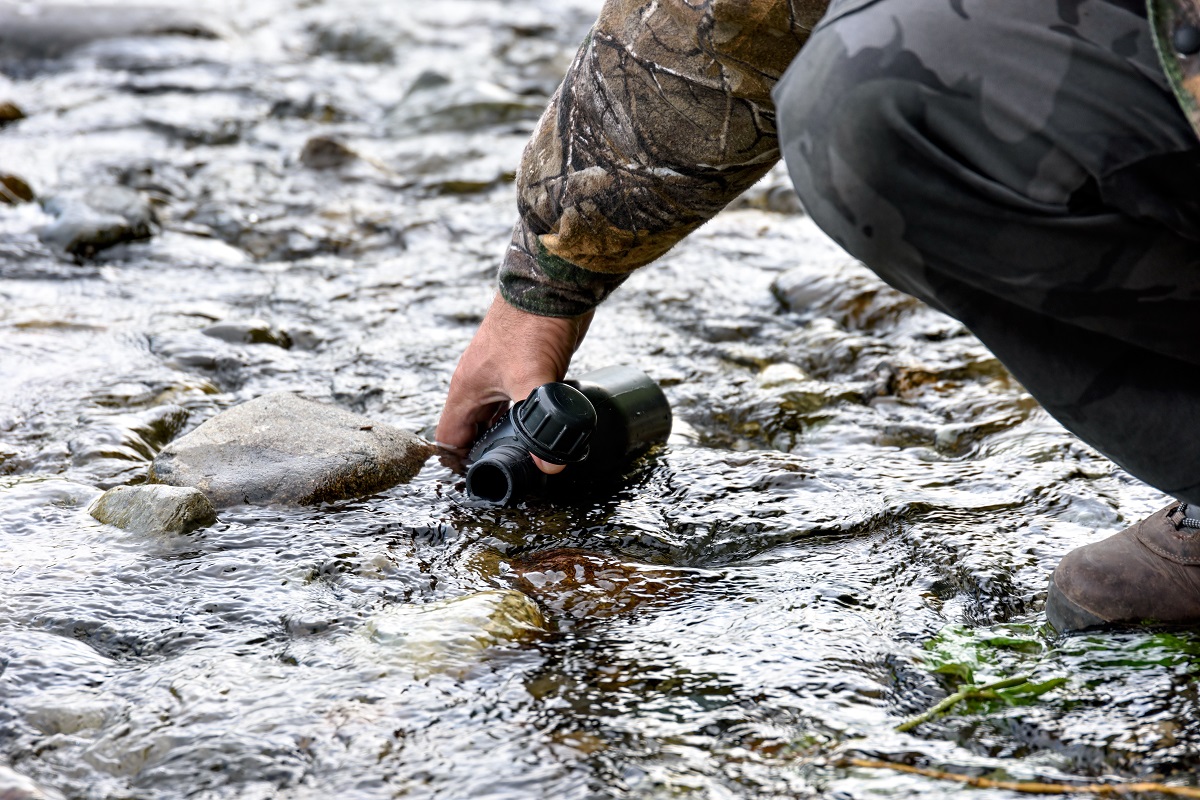Hunters innately possess a number of coveted outdoor survival skills, like how to track, kill, and field dress an animal. However, like everyone, they might have some gaps in their knowledge, and since we spend the majority of our time in the wilderness, it is best to know how to survive it if the worst should happen.
1 – Navigating by Day or Night
If you find yourself off your usual hunting trail and without GPS, it is important to still know your way around. During the day, the sun is your most powerful directional tool as it rises in the east and sets in the west. If you have general knowledge of the area, this can help lead you back to a road or a trail that can get you back to civilization.
At night, the moon isn’t quite as reliable, so instead you want to find Polaris, or the North Star. Located at the end of the Little Dipper’s handle, if you can find it, you will have found true north. With that found, you can plan your route accordingly, but you should still wait until daylight to do most trekking.

2 – Finding Clean Water
Water is the most important resource for a person to have. You can go a couple of weeks without food, but three days without water in the wilderness means you won’t be leaving alive. That being said, there are two types of water in the wilderness – potable water that doesn’t need purification and water that can kill you if it isn’t purified.
Drinking from lakes and streams without purifying the water is a gamble. Even if it looks clean, it can easily be tainted by animal feces and other factors upstream that give birth to unpleasant waterborne bacteria. Instead of gulping it down straight from the stream, bring it to a rolling boil before drinking to kill any bacteria inside.
Water that doesn’t necessarily need to be purified first includes rain, snow, dew, and water that comes from vines or watery sap like that of the maple tree. Providing these have not been contaminated in some way, they are okay to drink straight. But it’s always best to boil or purify any water from the outdoors to be safe. After all, no one wants to get beaver fever!
Everything You Need to Know About Finding and Purifying Water in the Wilderness
3 – Building a Fire
You would be surprised how many hunters don’t know how to start a fire from just a spark or without the helping hand of a little accelerant. However, it is an important life skill. Afterall, how many of you hunters actually carry a lighter? Even if you are using a lighter or some matches rather than the trusty old fire steel, it is important to remember that larger pieces of wood need more energy to burn. This is why you want to start with dry, easily burned tinder like dry grass, move up to very thin dry kindling like sticks the size of tooth picks, progress to slightly thicker dry wood like those the size of pencils, then continue on to branches and logs. Once you get a fire going, you can also start throwing on a couple pieces of wetter wood to dry out and burn at a slower rate. The number one rule is to gather all the different sizes of fuel before you begin to strike a spark.
 The Outlast Survival Tool is a must-have tool to keep in your pack. From the multiple uses you can have for parachute cord (tourniquet, clothes line, fishing line, etc.), to the knife & hook sharpener, to the magnesium fire starter – this one small lightweight tool will get you through a pinch.
The Outlast Survival Tool is a must-have tool to keep in your pack. From the multiple uses you can have for parachute cord (tourniquet, clothes line, fishing line, etc.), to the knife & hook sharpener, to the magnesium fire starter – this one small lightweight tool will get you through a pinch.
4 – Building a Shelter
If lost in the wilderness and the sun is getting ready to set, your priority should shift from trying to find your way out to building a shelter, particularly if the temperatures are going to drop drastically at night as they often do during hunting season.
Building a shelter is all about staying high and dry. You want to use debris like leaves, pine needles, moss and even small twigs to elevate your sleeping area off the ground so that it won’t leech away all your body heat. However, you will also want protection from dew, frost, and rain by building a roof.
Finding a fallen log or short rock wall is a good option so you can create a simple lean-to by resting branches over one side to give you a simple, but effective roof. Want to make sure you stay extra warm? Build the shelter room low and keep the shelter small. It will help keep your body heat close.







